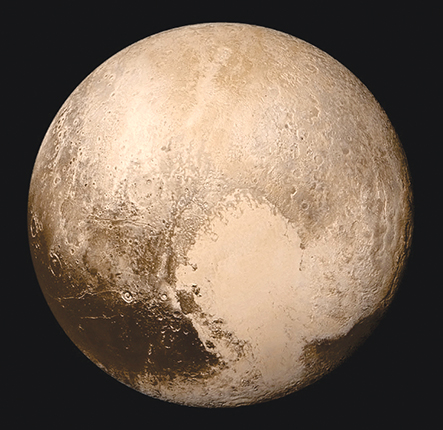Two kinds of dwarf planets
DOI: 10.1063/PT.3.3257
Between 30 AU and 50 AU from the Sun lies a disk of ancient icy objects known as the Kuiper belt. Most of the objects are just a few tens of kilometers across; they never coalesced with other objects to form planets. But there are exceptions. Astronomers estimate there are a few hundred dwarf planets in the Kuiper belt. Thanks to ground-based observations using adaptive optics and the visit to Pluto last year by New Horizons, the properties of five of the Kuiper belt dwarfs—Eris, Haumea, Orcus, Pluto, and Quaoar—are becoming clearer. In particular, Amy Barr of the Planetary Science Institute in Tucson, Arizona, and Meg Schwamb of Academia Sinica in Taipei, Taiwan, have reexamined each planet’s density and the mass ratio of each to its principal moon. Barr and Schwamb found that the planets fall into two groups. Pluto (

NASA/JHUAPL/SWRI





